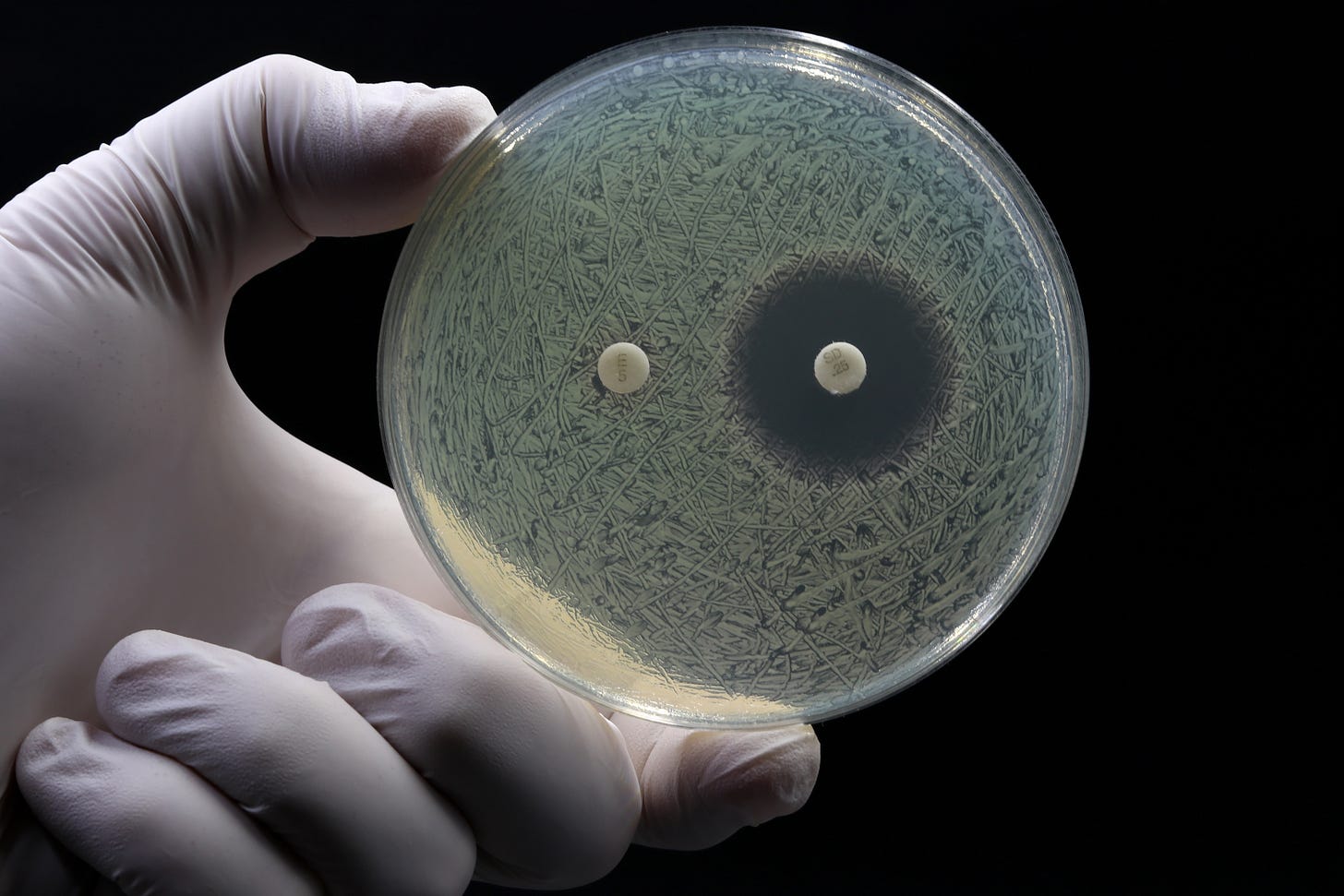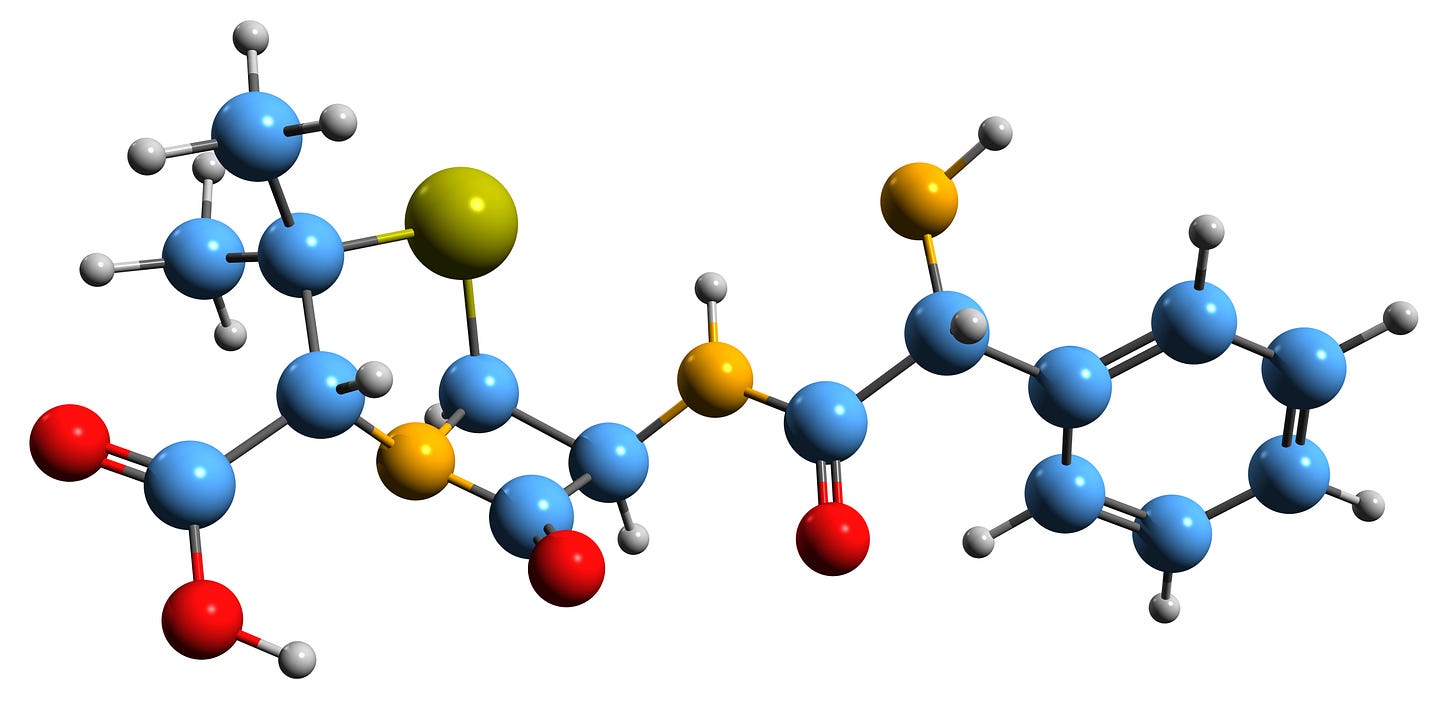The Accidental Miracle: How a Messy Lab and a Bit of Mold Changed Medicine Forever
The true story behind penicillin—the world’s first antibiotic, and the serendipitous discovery that still saves lives today.
Penicillin Family Molecular Weight: 334–350 g/mol
Imagine this: You come back from vacation, your inbox overflowing, your desk a disaster. You sigh, roll up your sleeves, and start sorting through the chaos. Now, imagine that in the middle of all that mess, you stumble on something that will change the world forever.
That’s exactly what happened to Alexander Fleming in 1928. His lab was cluttered, his petri dishes stacked haphazardly, experiments left to fend for themselves. But in that mess, Fleming noticed something odd—a dish where bacteria had vanished, leaving a clear halo around a fuzzy patch of mold. Most of us would have tossed it out. Fleming leaned in and investigated.

What he found was penicillin, the world’s first true antibiotic. It didn’t just kill bacteria—it did so gently, leaving human cells unharmed. It was a game-changer, but at first, almost no one noticed. Years passed. The world spun on. But the story didn’t end there.
A team of scientists picked up where Fleming left off, turning that accidental discovery into a medicine that could be mass-produced. By World War II, penicillin was saving thousands of lives—soldiers, children, everyday people who would have died from infections we now treat with a simple pill.
Today, we take antibiotics for granted. But the next time you reach for that little bottle, remember: it all started with a messy lab, a curious mind, and a bit of mold that refused to be ignored.
Sometimes, the biggest breakthroughs come from the smallest, most unexpected places. All it takes is someone willing to look a little closer.
The Impact Today
Penicillin didn’t just change medicine—it changed the world. Before antibiotics, even a small cut or a sore throat could turn deadly. Today, thanks to penicillin and the antibiotics that followed, we routinely survive infections that once wiped out entire communities. Surgeries are safer, childbirth is less risky, and life expectancy has soared.
But the story isn’t over. The rise of antibiotic resistance is a growing threat, as bacteria evolve to outsmart our medicines. Scientists are racing to discover new antibiotics and develop smarter ways to use the ones we have. A lesson? The greatest discoveries need care, stewardship, and a willingness to keep looking to find the next breakthrough.
Did You Know?
Penicillin was called a “miracle drug” during World War II, and its mass production was considered as important to the war effort as tanks and planes.
Fleming warned about antibiotic resistance as early as 1945, predicting that misuse could make penicillin less effective—a warning we’re still grappling with today.
The first patient treated with penicillin was a policeman with an infection. He improved dramatically, but supplies ran out before he could be fully cured, highlighting the urgent need for mass production.
Penicillium notatum, the mold that started it all, was later replaced by a different species, Penicillium chrysogenum, which produced much more penicillin and made large-scale manufacturing possible.
Further reading about the discovery of penicillin can be found here.
Curious about the impact of more molecules? Subscribe to Molecular Weights and discover the hidden stories behind the molecules that weigh heavy on our world our world.



